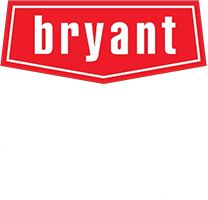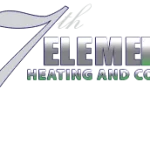Creating a Healthier, More Cost-Effective Home Environment in the Treasure Valley
As a homeowner in Meridian or the greater Boise area, you understand the unique demands our climate places on a home. From sizzling summer days to frigid winter nights, your heating and cooling system works overtime. But what if your HVAC system could do more than just manage the temperature? Modern, energy-efficient systems offer a gateway to a healthier, more comfortable, and more affordable home life. They represent a shift from merely heating and cooling to creating a complete indoor environment that is both eco-friendly and cost-effective. Investing in an energy-efficient system isn’t just an upgrade; it’s a long-term strategy for enhancing your family’s comfort and well-being while significantly reducing your monthly utility expenses.
What Makes an HVAC System “Energy-Efficient”?
The term “energy-efficient” isn’t just a marketing buzzword; it’s a measurable standard of performance. Several key metrics help homeowners understand exactly how well a system converts energy into comfortable air. Understanding these ratings is the first step toward making an informed decision for your home.
SEER2 (Seasonal Energy Efficiency Ratio 2)
This rating measures the cooling efficiency of air conditioners and heat pumps. As of 2023, the testing standards became more rigorous to better reflect real-world conditions, hence the “2” in SEER2. The Department of Energy requires new systems in Idaho to have a minimum rating of 13.4 SEER2 (equivalent to the old 14 SEER). Higher SEER2 ratings mean greater efficiency and lower cooling costs.
AFUE (Annual Fuel Utilization Efficiency)
Specific to furnaces, AFUE measures how much fuel is converted into usable heat over a year. An 80% AFUE rating means 80 cents of every dollar spent on fuel heats your home, while 20 cents is lost. High-efficiency furnaces boast AFUE ratings of 90% or more, with some models approaching 98.5%, meaning minimal energy waste.
HSPF2 (Heating Seasonal Performance Factor 2)
This metric is for the heating mode of a heat pump. Like SEER2, HSPF2 was recently updated for greater accuracy. A higher HSPF2 rating indicates more efficient heating performance. Modern cold-climate heat pumps, which are excellent for Idaho’s winters, have significantly higher HSPF2 ratings.
Exploring High-Efficiency HVAC Options
Today’s market offers a variety of energy-efficient systems tailored to different needs and home types. Here are some of the leading options for Treasure Valley homeowners.
High-Efficiency Air Conditioners
Modern air conditioners far exceed the minimum efficiency standards. Units with higher SEER2 ratings often feature variable-speed compressors, which adjust their output to match the precise cooling needs of your home rather than running at full blast all the time. This results in more consistent temperatures, better humidity control, and significant energy savings. If your current AC is over a decade old, a new high-efficiency air conditioning installation can cut your cooling costs dramatically.
High-Efficiency Furnaces
A furnace with an AFUE rating of 90% or higher is considered high-efficiency. These are often “condensing” furnaces, which feature a second heat exchanger that captures heat from exhaust gases that would otherwise escape up the chimney. This process extracts more warmth from the same amount of fuel, making it a smart investment for our cold winters. A professional furnace installation can ensure your home stays warm without the high utility bills.
Heat Pumps: The All-in-One Solution
Heat pumps are a game-changer for year-round efficiency. Instead of creating heat, they move it. In summer, they pull heat out of your home. In winter, they absorb heat from the outside air and transfer it inside. Modern cold-climate heat pumps are remarkably effective even when temperatures drop below freezing, making them a viable and highly efficient primary heating source in Idaho. Since they do both heating and cooling, heat pumps offer incredible value and lower carbon emissions.
Ductless Mini-Splits
Ideal for homes without existing ductwork, new additions, or for targeting specific rooms, ductless mini-splits offer exceptional efficiency and flexibility. These systems consist of an outdoor unit connected to one or more indoor air handlers, each with its own thermostat. This naturally creates temperature zones, so you only cool or heat the spaces you’re using, preventing wasted energy.
Efficiency Ratings at a Glance
| System Type | Efficiency Metric | Standard Efficiency | High-Efficiency |
|---|---|---|---|
| Air Conditioner | SEER2 | 13.4 – 15.0 | 16.0 – 22.0+ |
| Gas Furnace | AFUE | 80% | 90% – 98.5% |
| Heat Pump | HSPF2 | 7.5 | 8.5 – 13.0+ |
Beyond the Unit: Enhancing System Efficiency
Pairing your high-efficiency unit with smart accessories can push your savings and comfort even further.
Smart Thermostats
A smart thermostat learns your family’s schedule and preferences, automatically adjusting the temperature to save energy when you’re away or asleep. You can control it remotely from your smartphone, giving you complete command over your energy usage and potentially saving up to 10-15% on your bills.
HVAC Zoning Systems
Why cool the entire house when everyone is in the living room? An HVAC zoning system divides your home into distinct areas, each controlled by its own thermostat. Dampers in your ductwork open or close to direct conditioned air only where it’s needed, which can reduce energy consumption by up to 30%. It’s the ultimate solution for personalized comfort and eliminating temperature imbalances between floors.
The Importance of Proper Installation & Maintenance
The most advanced equipment will fail to deliver on its efficiency promises if it’s not installed and maintained correctly. Professional HVAC installation ensures your system is sized correctly for your home and that ductwork is sealed properly. Following up with regular tune-ups through a maintenance plan keeps it running at peak performance, preventing energy waste and extending its lifespan.
Why Efficiency Matters in Meridian and the Boise Area
The Treasure Valley’s distinct four seasons mean our HVAC systems rarely get a break. The investment in an energy-efficient system provides substantial returns here. It equips your home to handle 100-degree summer heatwaves and sub-freezing winter spells with ease and affordability. For families in Meridian, Eagle, Boise, Nampa, and surrounding communities, an efficient system isn’t a luxury—it’s a practical necessity for managing household budgets and ensuring your home is a comfortable sanctuary year-round.
Ready to Upgrade Your Home’s Comfort and Efficiency?
Stop overpaying on utility bills and start enjoying a healthier, more comfortable indoor environment. The expert team at 7th Element Heating and Cooling is here to help you find the perfect energy-efficient solution for your home.
Frequently Asked Questions (FAQ)
What is a good SEER2 rating for Idaho?
The minimum required SEER2 rating for new air conditioners in Idaho is 13.4. However, for better efficiency and long-term savings, a system with a SEER2 rating of 16 or higher is an excellent choice.
How much can I actually save by upgrading my HVAC system?
Upgrading from an older, less efficient system can be substantial. Depending on the age of your current unit and the efficiency of the new one, homeowners can save anywhere from 20% to 40% on their heating and cooling costs.
Is a heat pump a good choice for the cold winters in Meridian?
Absolutely. Modern cold-climate heat pumps are designed to operate efficiently even in freezing temperatures. Many homeowners in Boise and Meridian rely on them for year-round comfort. For extreme cold snaps, a dual-fuel system that pairs a heat pump with a high-efficiency furnace offers unbeatable reliability and efficiency.
How often should I have my energy-efficient system maintained?
To keep your system running at peak efficiency and prevent breakdowns, it’s recommended to have it professionally serviced once a year. A cooling tune-up in the spring and a heating tune-up in the fall is the ideal schedule.
Glossary of Terms
SEER2 (Seasonal Energy Efficiency Ratio 2): An updated metric that measures the cooling efficiency of an air conditioner or heat pump over an entire cooling season, using more real-world testing conditions than the previous SEER standard.
AFUE (Annual Fuel Utilization Efficiency): A percentage that represents how much fuel a furnace converts into usable heat. A higher AFUE means less fuel is wasted.
HSPF2 (Heating Seasonal Performance Factor 2): An updated measure of a heat pump’s heating efficiency over an entire season. A higher HSPF2 rating signifies greater efficiency.
Heat Pump: A versatile HVAC system that provides both heating and cooling by transferring heat, rather than creating it through combustion.
HVAC Zoning: A system that uses dampers in the ductwork and multiple thermostats to control the temperature in different areas (“zones”) of a home independently.

